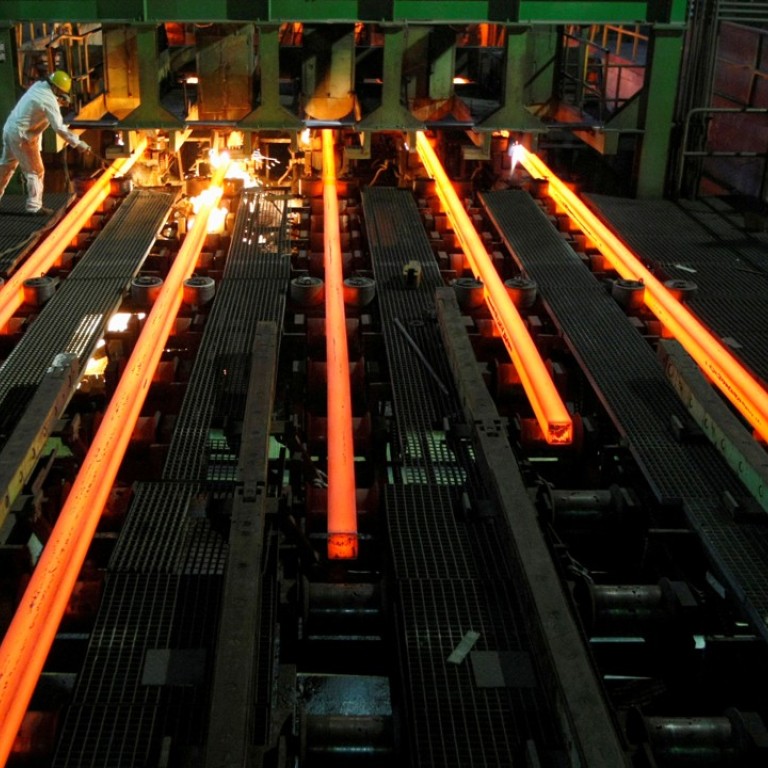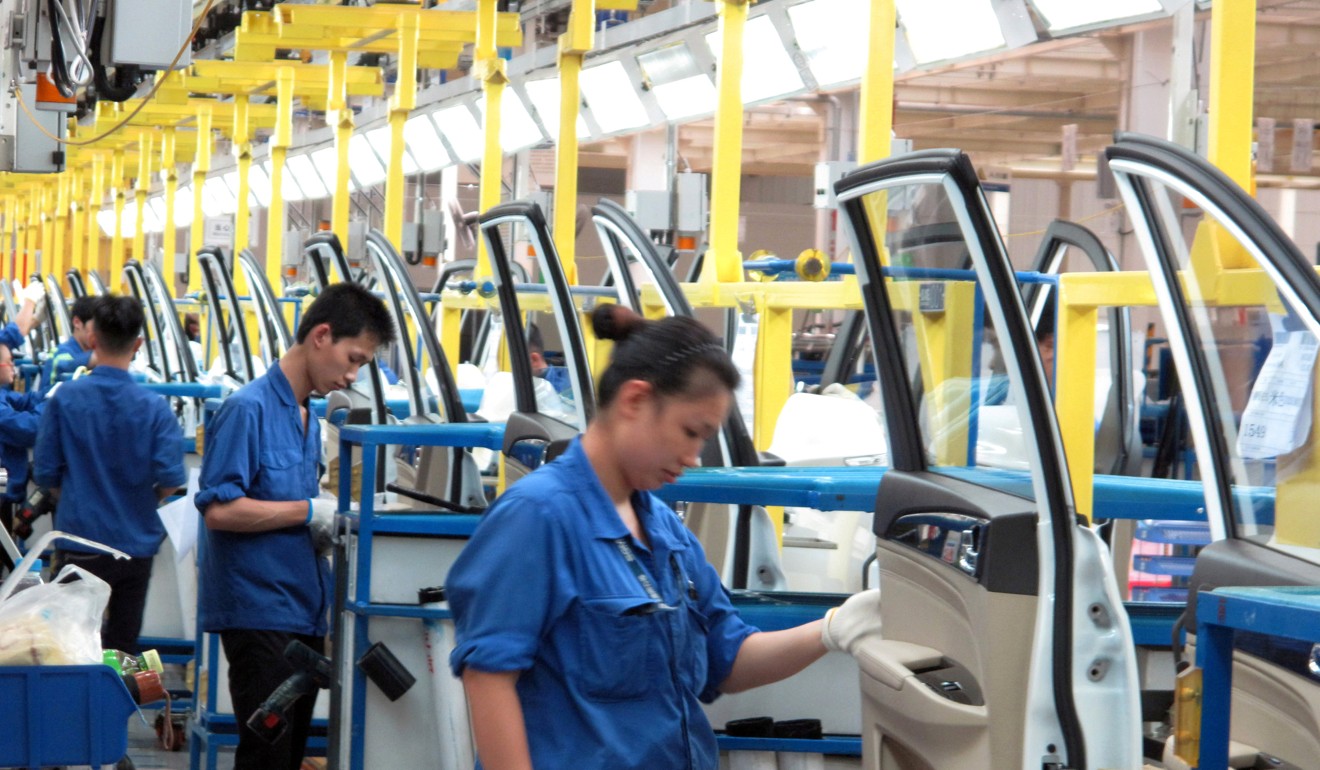
Mining and heavy industry lead the way as China’s industrial profits surge in October
But efforts to improve balance sheets at Chinese firms may have stagnated, with the asset-to-liability ratio unchanged for the last three months
China’s industrial firms weathered a broad government crackdown on financial risks as profits continued to surge last month in a stabilising force for the world’s second-biggest economy, which has started to cool slightly in recent months.
The vast industrial sector has been boosted by a year-long, government-led construction spree, helping lift demand and prices for building materials and taking the edge off higher borrowing costs.
Mining and heavy industry contributed the biggest gains in October, propelling overall industrial profits by 25.1 per cent year on year to 745.4 billion yuan (US$112.94 billion), compared with a 27.7 per cent jump in September, the National Bureau of Statistics said on Monday.

Despite the modest slowdown, October’s growth rate was still the second-highest for a single month this year, and overall profits are on pace to easily top 2016’s record 6.88 trillion yuan.
“Apart from very high growth of the coal sector, we have very decent growth in other sectors as well,” said Iris Pang, greater China economist at ING in Hong Kong. “I think this growth will be sustainable, even though ... we will have high base effect in coal and steel next year.”
The data covers large companies with annual revenue exceeding 20 million yuan from their main businesses.
More than half of the increase in profits in October came from mining, iron and steel smelting and processing, chemicals, and oil and natural gas extraction, He Ping of the statistics bureau said in an accompanying statement.
The closure of polluting plants and factories has fuelled fears of supply shortages in the winter, lifting prices of finished goods including steel and copper products.
The high-price trend has persisted, with domestic iron ore futures prices up over 15 per cent since the start of November, while coking coal has risen over 23 per cent.
Data earlier in the month showed China’s factory prices continued to post strong gains as capacity cuts and anti-pollution measures kept supply in check.

Factory activity, however, has cooled in the past few months. A batch of October data including industrial output, investment and retail sales also undershot expectations, as Beijing’s crackdown on financial risks raised borrowing costs, while the tighter pollution rules have shut many factories and mines.
These factors have started to drag on Asia’s economic powerhouse, which has defied market expectations with growth of 6.9 per cent in the first nine months of the year, supported by the construction boom and robust exports.
Curbs on the property market to fend off speculators are also expected to persist, putting a lid on a range of sectors including construction.
Despite the government’s focus on reducing corporate leverage, the asset-to-liability ratio has remained unchanged at 55.7 per cent for the last three months, indicating efforts to improve balance sheets at Chinese firms may have stagnated.
Growth in liabilities has also picked up this year. At the end of October, industrial firms’ liabilities were 6.7 per cent higher than a year earlier, compared with a 6.7 per cent increase as of the end of September and 6.3 per cent growth for 2016.
A Reuters analysis of listed firms shows the debt pile at Chinese companies continues to climb, with levels at the end of September growing at the fastest pace in four years.
China’s stock markets were down in Monday morning trading, as jitters over an effort to improve oversight in the financial industry pulled down companies in the sector, led by a 1.64 per cent decline in the Shanghai Stock Exchange’s banking index.
In the first 10 months, industrial firms notched up profits of 6.25 trillion yuan, up 23.3 per cent from a year earlier, compared with a 22.8 per cent gain in January-September.
There was some moderation in profit growth for upstream industries, as mining profits rose 405.4 per cent from a year earlier in January-October, compared to 473.8 per cent growth in the first nine months of the year.
Profits earned by China’s state-owned firms rose a sharp 48.7 per cent to 1.41 trillion yuan in the first 10 months, compared to 47.6 per cent in January-September.
“I don’t think industrial profits will be affected a lot. [Growth] will not be 20-something per cent, but it can still be in the high teens,” ING’s Pang said.

